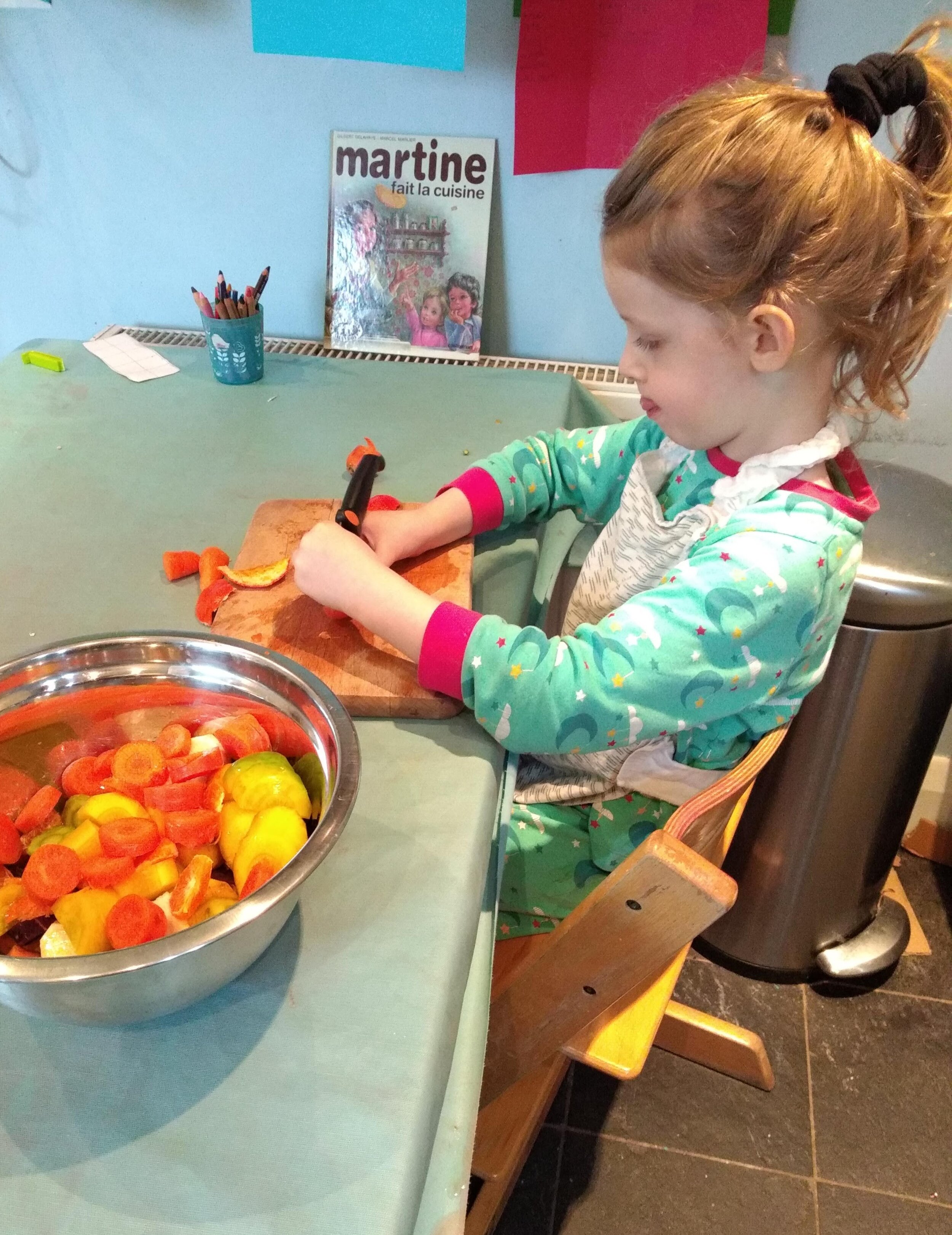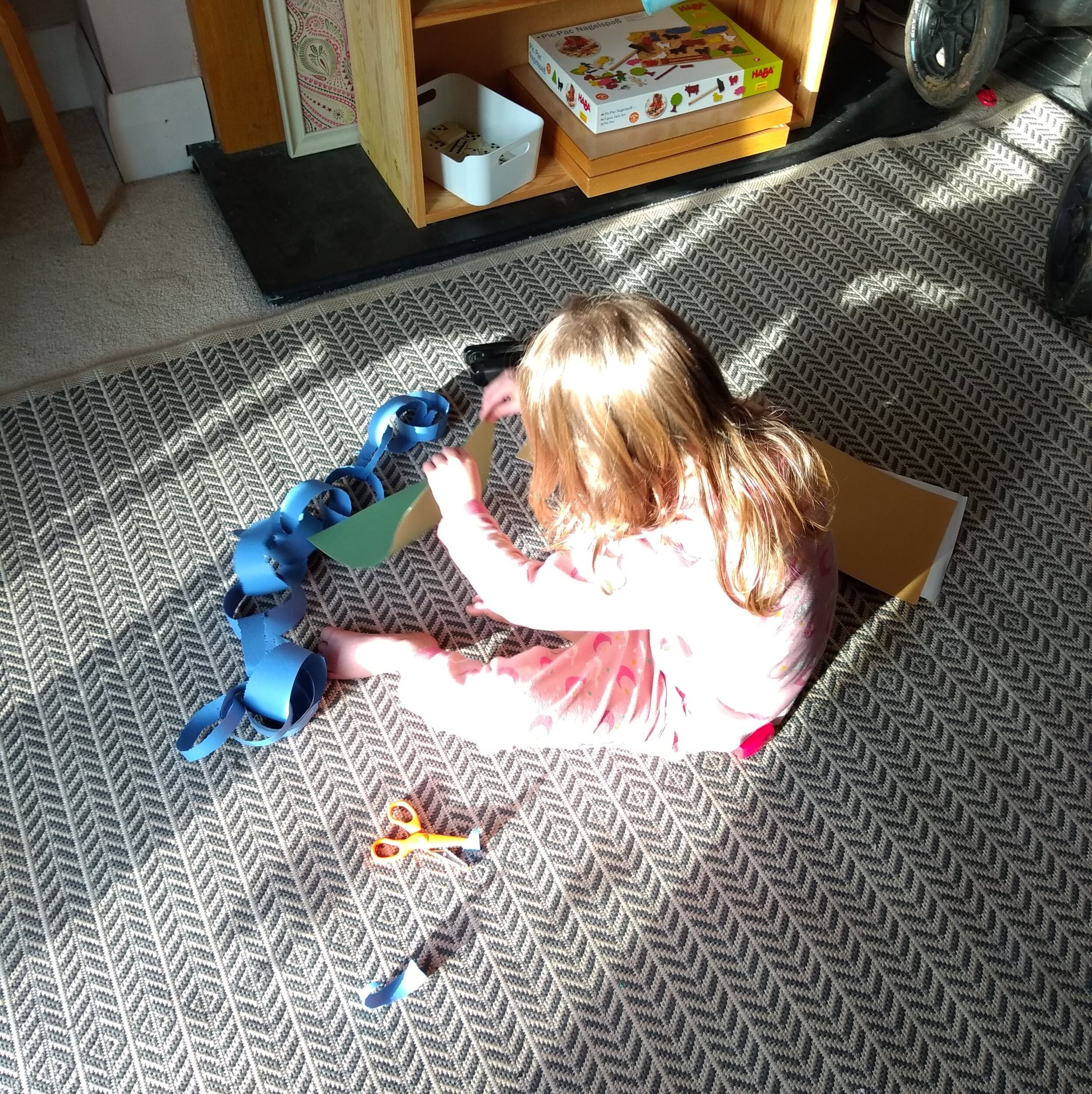Many of us are facing the likelihood of spending more time at home - possibly completely indoors or within he confines of your home and garden. This probably feels daunting to all of us, but if you’re parenting a spirited child, you might feel downright worried about how to channel all that energy and exuberance during periods of mandatory indoor activity.
We used to get out of the house and go on adventures nearly every day when A was small. It fed his need for excitement and lots of input, and things felt easier when we were out and about. It was a real shock for both of us when Birdie was born and for a number of reasons wasn’t as portable as we expected him to be. We had to change our activity patterns and focus more on being happy at home together. In the beginning, I would never have thought that my spirited kid would eventually prefer to spend most of his days doing activities at home, but I’ve come to see the real value in a slow pace and a smaller scale of adventure for spirited kids. As much as they crave the fast, big, and exciting, their spirits need the counterbalance of unstructured time and quiet to stay balanced.
I wanted to share a few tips for keeping spirited kids happy indoors, and some of the activities I keep on hand for times like the ones we find ourselves in.
Tips for Supporting Spirited Kids’ Indoor Play
1. A Solid Rhythm
I talk about rhythm a lot, because it’s one of the best ways to keep everyone in the family going in the same direction. Children – especially spirited kids with short attention spans or high levels of anxiety – thrive when they know what to expect. A good balance of calm and busy activities throughout the day can help spirited kids to let out their wild wiggles and draw back into a sense of calm. If you’re not able to go out of the house when you normally would, leading the children in a vigorous or silly gross motor activity will help to shift the energy in a similar way.
2. Gross Motor and Sensory Play
Most spirited kids engage well with sensory play, especially when it combines with gross motor activities. Jumping off of the couch or rolling onto cushions, carrying heavy things around, or doing practical life tasks like vacuuming give spirited kids the sensory feedback they’re seeking without needing to go to a playground or soft play gym. A set of gymnastic rings in a doorway can be a great way to introduce more gross motor play indoors, even in a small space. A dance party is a great combination of sensory and gross motor activity!
For quieter, ‘in-breath’ sensory play, sand, water, and kinetic sand play help spirited kids to re-regulate after letting out some happy energy. For indoor water play, you can head straight to the bath, or put some containers of water into a larger container to minimize the cleanup – although for many children, the cleanup is the best part of the activity!
3. Participation in real helpful tasks
If your children are around more than then might be usually, invite them to participate in the household’s daily activities as essential partners. Even very small children can help to sweep floors, wipe surfaces, load a washing machine, and hang washing on a line. Children who are old enough to understand why there has been a change in activity patterns may be very keen to pitch in and help the family through an unusual time.
4. Invitations to play alongside you
Often, spirited kids feel overwhelmed by input when you suggest a few activities they might like to do. This can lead quickly to frustration and upset feelings all around! I find that A responds with much greater interest when I begin an activity myself and invite him to join me. Even two choices can feel overwhelming to kids who find it a challenge to tune out background input.
Something else that works for some children is leaving out an interesting activity which you have already begun in some way, like doing a few pieces of a puzzle or putting a few paint strokes onto paper. This reduces the ‘entry anxiety’ that some kids feel when starting a new activity.
Older children may like to help you create a visual menu of activities that can help them remember what their options are. Looking at an overflowing cart of art materials might be exciting and inspiring for some children, but many spirited kids will struggle to identify actual activities they could do with the materials in front of them without guidance.
5. Playful Parenting
If there’s one parenting ‘technique’ that I suggest more than any others, it’s using play as a way to respond to challenging situations with your child. You might all be feeling under more strain than usual; anxieties about health, worries about money or missing out on important events, or just managing without your normal routines and support networks. It can be easy to fall into a pattern of responding to your child with closed requests and tired repetitions of requests. You might hear yourself saying no more than you’d like. Try to push yourself to find the fun or game in whatever the situation involves. Your child is more likely to want to participate, and you’re both much more likely to feel happier! Lawrence Cohen’s excellent book Playful Parenting is the bible of this – I recommend skimming it if you can find the time.
Remember to look after yourself - parenting a spirited child is a noisy, tiring adventure on the best of days! Mindfulness exercises or podcasts, getting out for a walk if you’re able, and drinking enough water all go a long way towards building your reserves of patience and playfulness,
Screen-free Games for Spirited Kids
If you’re looking for activities to keep spirited kids entertained indoors without switching on a screen, here’s a list of my top tips:
1. Process art
Not crafts! Just unstructured, experimental art. If you have paints, paper, glue, and scissors, you’re off to a good start. There are some great ideas for process art setups at Art Bar Blog if the concept is new to you. Some mess is inevitable, but this is all part of the process! The most usual invitations I lay out are watercolours with large sheets of paper, two colours of poster paints on black paper, and collage making from magazines and catalogues that come through our door.
2. Indoor playground
Move the breakable things. Cushions on the floor – which is now made of lava. Go!
3. Stories of all varieties
Reading out loud, audio books, story podcasts, making up stories with dolls or puppets. There’s nothing like stories to keep everyone engaged. Remember that for your child, listening to a story might happen best while building with blocks, rolling on the floor, or modelling with clay. Or, of course, while dropping books on your toes!
4. Gardening
If you have access to a garden, then that’s most of your work done for you already. Invite your child to help plant, dig, weed, or hunt for minibeasts. If you have access to a balcony, consider whether you can add a few large pots with soil for transferring, or some blankets and cushions for making a den or gazing at the sky. Gardening is great rain or shine - you’re only steps away from dry clothes and a hot bath!
5. Homemade play dough
We pull out our play dough a couple of times a day. My recipe is simple and keeps for a long time.
1 cup salt
2 cups flour
1 cup water
3 tablespoons oil
1 tablespoon cream of tartar
add in food colouring or scents if you choose.
Mix, then cook over a medium heat stirring constantly until it is not sticky. Tip out and knead (it will be hot!!) until it’s smooth and cool enough for a child to touch. Keep in an airtight container.
6. Story-led immersive play
Is there a story your child is especially loving? It could be any sort – an immersive chapter book like The Faraway Tree by Enid Blyton, or a picture book. Consider all the different things that you and your child could do or make together to bring the story to life. Could you make food from the book? Design costumes made from sheets or old clothes? Act out the story? Make invitations to a party, or build a home from the story out of paper or boxes?
7. Music making as a family
You don’t need to be a musician or an amazing singer to make music with your children! Pool the instruments you have or make your own drums and shakers out of things you find in the kitchen. Marching through the house adds to the fun! Anything goes – nursery rhymes, pop tunes, and things you make up yourself. If you’re not used to silly music making, you might feel embarrassed at the start of this game, but give yourself a pep talk and try. It’s quite fun when you lean into it!
8. Practicing ‘be-ing’
Spirited kids can have a hard time just ‘being’. Their high need for stimulation and physical movement means that it takes longer for them to develop their own ways of easing into situations and dropping into independent play. Many of us have become accustomed to providing lots of input or entertainment in the form of activities and outings because this is what seems to make our kids happy. But when these things aren’t available, it’s a great opportunity to support your spirited kid to strengthen their ‘being muscles’. Some kids respond well to mindfulness exercises as a way to help them hear their own inner voice. Prepare yourself to guide and support without needing to ‘fix’ your child’s boredom. Try to schedule at least one ‘being time’ per day where you provide no entertainment or direction for your child’s play, and see where it leads.
If you’d like in-depth, personalised guidance to support your child’s learning and play at home, I have a few spaces remaining for one to one Motherhood Mentorship calls in March. I’ll work with you throughout our 90 minute call to help you discover new tools and tactics for preparing a fun, calming environment at home for your spirited child. I’ll also help you unpack some of the frustrations or worries you may be feeling about parenting your spirited child with respect and compassion. Find out more here: Mentorship Calls.







